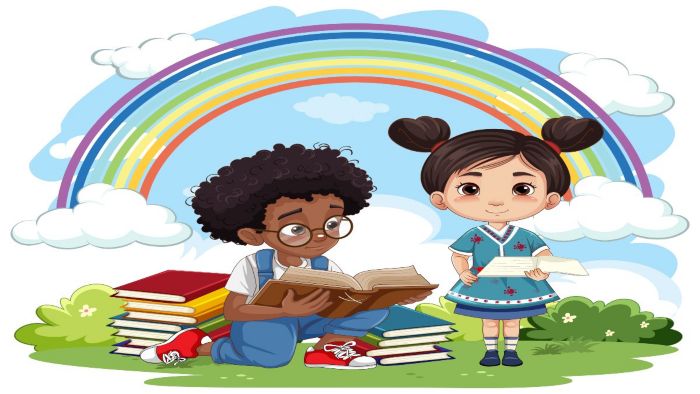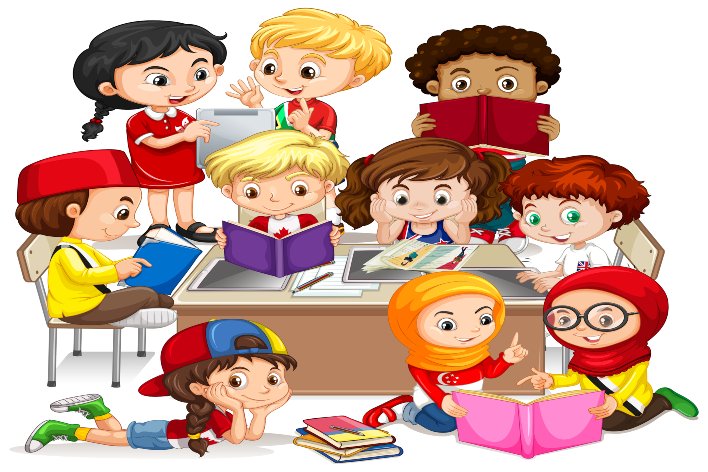How to Build a Multicultural Book List for Your Child?

As the world is becoming increasingly globalized, it's important to sensitize children to the appreciation of other cultures and traditions at a tender age. One of the most effective ways that you can be used for exposing your child to other cultures traditions and ways of thinking is through books. Multicultural books can broaden one's view, helping the child to understand and appreciate the different experiences people have around the globe. But how does one come up with an interesting and diverse multicultural book list for a child?
This article will help you choose multicultural children's books that reflect the rich diversity of our global society. By selecting a collection of books representing different cultures, carefully curated, they can guide your child into an atmosphere of empathy, cultural awareness, and love for reading.
Why Multicultural Books Matter
Multicultural children's books open windows into cultures different from what your child may have grown up with. Thus, they offer opportunities to explore traditions, languages, histories, and values not known by him or her. Exposure to those differences can thus foster a sense of respect for diversity and help children understand that although people come from different backgrounds, there is that universal experience tying all of us together.
Multicultural books can work as mirrors for children from under-represented communities. Seeing themselves in books validates what they have experienced, boosts their self-confidence, and makes them identify and feel they belong. Every child must have the feeling of being worthwhile and recognized in literature when reading.
Introducing multicultural children's books to one's child reading list not only makes them sound more inclusive but also a global citizen who is sensitive to issues relating to their community, respects diversity, and enjoys knowledge on how to handle problems in various parts of the world.
How to Choose Multicultural Books

Choosing multicultural books for your child isn't a cakewalk. Here are some tips on what to consider as you build your diverse book list:
Authentic Representation
Authenticity best refers to the need to authenticate the children's books based on their multicultural focus. Then, one should look for books in which the authors involved in writing the book belong to the culture or have done proper research to get the authenticity correct. Authentic storytelling about a culture gives readers a reflection of what the culture truly is as opposed to relying on stereotypes and oversimplifications.
You can also look out for the inclusion of awards such as the Coretta Scott King Award, the Pura Belpré Award, or the American Indian Youth Literature Award indicating books that are notable works chosen from amongst those written and published by members of particular groups or about people from particular backgrounds.
Diverse Storylines and Themes
Multicultural books should vary as much as experiences and stories. Avoid limiting your selection to only books that focus on historical or conflict-driven narratives. All the children hear about struggles related to other cultures, but they also need to read stories of joy, celebration, and daily life in various communities.
You should look for books that promote diverse genres including adventure, fantasy, family life, humor, and many more; meanwhile, always take on a multicultural perspective so that your child will also be initiated in the richness and complexity of varied cultures.
Inclusive of Multiple Cultures
A well-rounded multicultural book list should include books representing various cultures from around the world. Of course, as a parent, you would start with books that tell stories of your own people or family's culture, but you should also include African, Asian, Indigenous, Latin American, Middle Eastern, and European traditions so that that introduces the child to that integral width of human experiences.
Age-Appropriate Content
Your multicultural book list should be pertinent to the age and developmental level of your child. For little children, picture books are wonderful due to their use of simple language and wonderful illustrations that point to cultural themes. For older children, some more intricate cultural themes may be found in the chapter books or young adult novels.
Example: Picture books, for instance, "Last Stop on Market Street" by Matt de la Peña, would be relatable to younger children and themes of community and urban life. Older readers will appreciate "Esperanza Rising" by Pam Muñoz Ryan, in the theme of immigration and perseverance.
Must-Haves Multicultural Children's Books to include
The task of developing a multicultural book list is quite painstaking, yet many beloved and acclaimed books are available for reference. As an introduction to some must-read multicultural children's books, that represent diversity across cultures, this list is given as follows:
African and African American Culture
1. "The Day You Begin" by Jacqueline Woodson – A beautifully illustrated book that teaches children to embrace their uniqueness and celebrate diversity.
2. "Hair Love" by Matthew A. Cherry – While this sweet tale of a father taking care of his daughter's hair says a lot about cultural pride and family, I emphasize the importance of family above everything else.
Asian and Asian American Culture
1. "Dim Sum for Everyone" by Grace Lin – This is a very colorful picture book introducing readers to the tradition of dim sum, which is a famous Chinese culinary practice.
2. "A Big Mooncake for Little Star" by Grace Lin – An enchanting tale of creativity and a lesson on the phases of the moon, with roots in Asian customs.
Latinx Culture
1. "Islandborn" by Junot Díaz – The story of young Lola and her journey to discover her roots and identity beautifully weaves family history and culture.
2. "Carmela Full of Wishes" by Matt de la Peña – This is a coming-of-age story of the hopes and dreams of a girl with a Latinx family, told through the perspective of a birthday wish.
Indigenous Culture
1. We Are Water Protectors by Carole Lindstrom- This is a heartfelt picture book inspired by a large number of indigenous-led movements to protect water and the Earth.
2. Kevin Noble Maillard, "Fry Bread: A Native American Family Story" Food is an excellent lens through which to view stories of cultures and traditions. Fry bread is the main item used for food preparation in this book about Native Americans.
Middle Eastern Culture
1. "The Proudest Blue" by Ibtihaj Muhammad This is a story about two sisters and the strong sense of pride and identity that one feels when she puts on the hijab for the first time.
2. "Golden Domes and Silver Lanterns" by Hena Khan - This beautifully illustrated book introduces children to the traditions and celebrations of Islamic culture.
Ways to Encourage Your Child with Multicultural Books
Selecting multicultural books is just a starting point; engaging your child in these stories is where the learning happens. Here are some ways you can make the most out of your list of multicultural books:
Read Together
For the younger child, reading multicultural books together opens up the theme to discussion and questioning. As you read, indicate to your child various cultural elements, such as clothing, food, and customs, and make sure he understands what these things are and why they're important. This allows the child to understand the diversity to which they are being exposed.
For older children, encourage them to read the multicultural books independently and then have a discussion about the stories. Ask questions like, "What did you learn from this book?" or "How do you think the characters felt in this situation?"
Connect to Your Child's Life
Make connections between the story and the life of your child. This can help him or her see that although people come from different cultures and live differently, there is shared experience in love, family, friendship, and other areas across cultures.
For instance, while reading a book on a festival in another country, you could ask your child how that compares to the festivals or celebrations his family enjoys. These connections make learning about cultures more relatable and meaningful.
Explore Further Through Activities
Extend learning beyond books with activities that reflect the culture you're reading about. After reading about some traditions, try cooking a meal from there together, learning a song or dance, or creating a craft that reflects the cultural art form mentioned in the story. Such hands-on experiences, make the lessons learned in books stick long and enhance cultural experience.
Update Your Multicultural Book List Periodically
Kids grow, and their interests change with age, as does your multicultural book list. Keep renewing the multicultural book list with the latest publications, a variety of genres, and books that reflect your child's current interest in the world. Also, heed recommendations that come from teachers, librarians, and other reputable book lists so that they offer a diverse and engaging reading experience for your child.
Conclusion
Creating a multicultural list of books for your child to enjoy is a rewarding way to introduce your child to the rich tapestry of cultures that make up our world. Books were chosen that authentically represent diverse stories, themes, and perspectives to help your child develop respect for others, celebrate cultural diversity, and gain a more comprehensive understanding of the world. As you collect and curate this list, use these stories to prompt discussions and activities to bring your child into an even closer connection with these stories, enriching reading experiences that promote empathy and the value of our shared humanity.
FAQs
1. What are multicultural children's books, and why are they important?
Multicultural children's books are stories featuring characters, traditions, and experiences from various cultural backgrounds. Because these books expose children to the vast variety of perspectives that exist around the world, they provide a unique opportunity to foster empathy, understanding, and respect for the richness of cultural diversity.
2. How do I select authentic multicultural books for my child?
To be authentic, find multicultural books written by the same author of the culture they represent or one who has won awards for his/her cultural accuracy. Another way to ensure that the books depict the culture accurately and respectfully is to seek opinions from credible sources as endorsements.
3. What can I do to make reading multicultural children's books more enjoyable for my child?
There are many things you can do to make reading interesting, such as relating it to your child's everyday life, asking open-ended questions, and participating in related cultural activities, for instance, by cooking meals from the culture or creating crafts mentioned in the book. These activities help to make learning come alive.
Leave a comment below and let's discuss some Multicultural children’s books for the young ones reading this !
Other Related Sections
NCERT Solutions | Sample Papers | CBSE SYLLABUS| Calculators | Converters | Stories For Kids | Poems for kids | Practice Worksheets | Formulas IBlogs
Also Read
Teaching Kids Culture and Tradition from Around the World | Discover, Engage, Celebrate, Connect Globally!
Teaching Kids Respect for Diversity and Other Cultures | Learn, Appreciate, Respect, Embrace Differences!
Admissions Open for 2025-26
CBSE Schools In Popular Cities
CBSE Schools in Bangalore
CBSE Schools in Mumbai
CBSE Schools in Pune
CBSE Schools in Hyderabad
CBSE Schools in Chennai
CBSE Schools in Gurgaon
CBSE Schools in Kolkata
CBSE Schools in Indore
CBSE Schools in Sonipat
CBSE Schools in Delhi
CBSE Schools in Rohtak
CBSE Schools in Bhopal
CBSE Schools in Aurangabad
CBSE Schools in Jabalpur
CBSE Schools in Jaipur
CBSE Schools in Jodhpur
CBSE Schools in Nagpur
CBSE Schools in Ahmednagar
CBSE School In Tumkur

